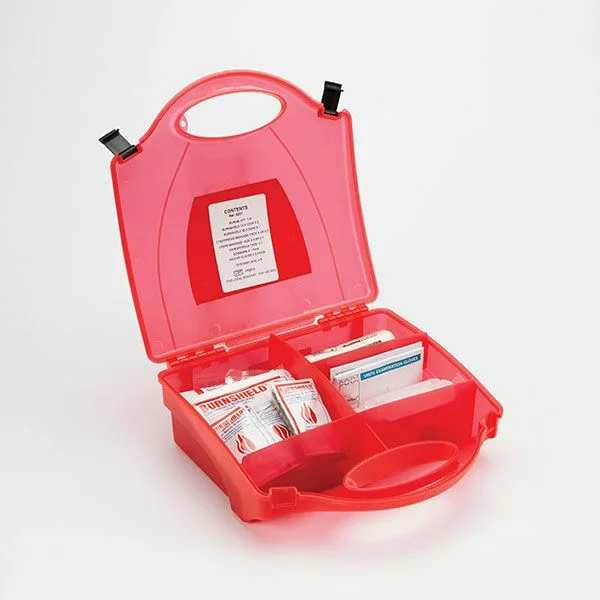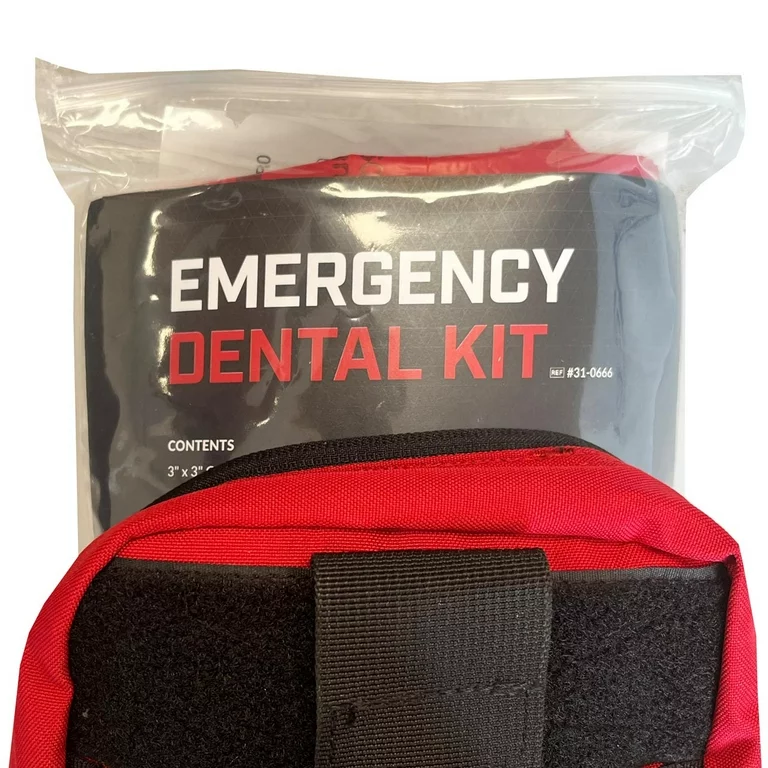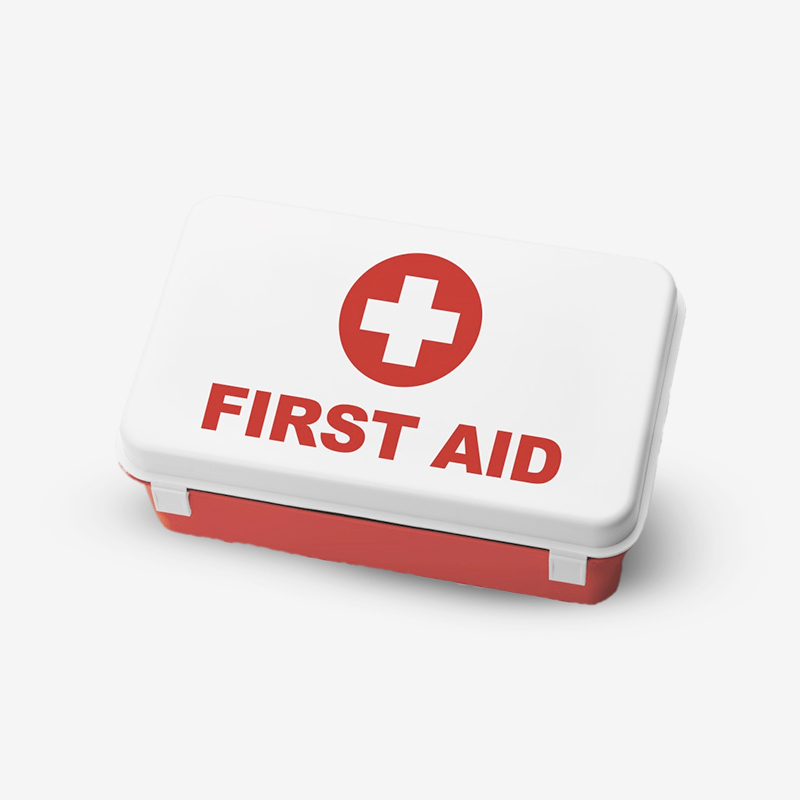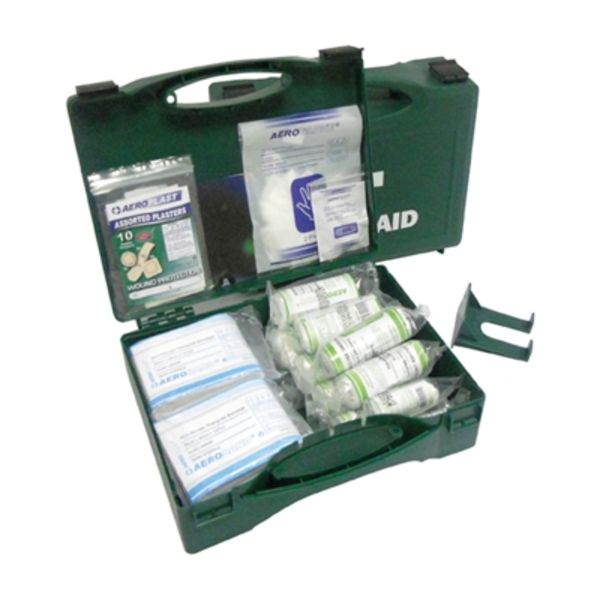I. Introduction

a. Purpose of a dental first aid kit
A dental first aid kit is essential for providing immediate relief and temporary solutions for dental emergencies. It is designed to help individuals manage dental issues until they can seek professional dental care.
b. Importance of having a dental first aid kit on hand
Having a dental first aid kit on hand is crucial, especially when facing dental emergencies such as toothaches, lost fillings, or broken teeth. It allows individuals to address the issue promptly and alleviate discomfort until they can see their dentist.
c. How to use a dental first aid kit
Using a dental first aid kit involves following the instructions provided for each item in the kit. Understanding how to use the items properly can help individuals effectively manage dental emergencies and relieve discomfort.
II. Essential Items for a Dental First Aid Kit
a. Toothache relief medication
One of the essential items for a dental first aid kit is toothache relief medication. This can include over-the-counter pain relievers such as ibuprofen or acetaminophen.
b. Temporary filling material
Temporary filling material is another essential item in a dental first aid kit. It can be used to temporarily fill a cavity or replace a lost filling, providing protection and preventing further damage to the affected tooth.
c. Dental wax
Dental wax is also a crucial component of a dental first aid kit. It can be used to cover sharp or broken edges of a damaged tooth or braces, protecting the soft tissues of the mouth from irritation or injury.
In addition to the essential items mentioned above, a dental first aid kit may also include other items such as cotton swabs, tweezers, sterile gauze pads, and an oral analgesic gel. These additional items can aid in managing various dental emergencies and providing temporary relief until professional dental care can be obtained.
It is important to regularly check and replenish the items in a dental first aid kit to ensure that they are up-to-date and in good condition. This may involve checking the expiration dates of medications and replacing any used or expired items.
III. Infection Control Supplies
a. Alcohol wipes
Alcohol wipes are a crucial part of infection control in a dental office. They are used to clean the surfaces of dental instruments and equipment, as well as to disinfect the hands of dental professionals before and after handling patients. Alcohol wipes are effective in killing a wide range of bacteria and viruses.
b. Sterile gloves
Sterile gloves are a non-negotiable item in infection control in dentistry. Dentists and dental assistants must wear gloves during patient examinations and dental procedures to prevent the transmission of microorganisms between patients and practitioners. Sterile gloves create a barrier between the dental professional and the patient, reducing the risk of cross-contamination and infection.
c. Antiseptic mouth rinse
Antiseptic mouth rinse is a valuable infection control tool in the dental office. It is used to reduce the number of microorganisms in the patient’s mouth before and after dental procedures. By using an antiseptic mouth rinse, the risk of transmitting bacteria and viruses from the patient’s oral cavity to the dental professional is minimized, contributing to a safer and more hygienic environment.
IV. Tools and Instruments
a. Dental floss
Dental floss is an essential tool for maintaining oral hygiene and preventing dental infections. It is used to remove food particles and plaque from between the teeth and along the gumline, where toothbrushes cannot reach. Regular flossing can help prevent the buildup of harmful bacteria , ultimately contributing to better oral health and infection control.
b. Tweezers
Tweezers are versatile tools that have various uses in a dental setting. They can be used to handle small objects, such as cotton pellets or small pieces of dental material, with precision and control. Tweezers are also helpful in placing and removing items from the patient’s mouth during dental procedures, contributing to a more efficient and hygienic practice.
c. Cotton swabs
Cotton swabs are indispensable in dental procedures for various purposes. They can be used to apply medication or disinfectant to specific areas of the oral cavity, as well as to absorb excess saliva or blood during dental treatments. Cotton swabs are effective tools for maintaining a dry and clean working environment.
V. Emergency Contact Information

a. Contact information for emergency dental services
It’s always important to be prepared for dental emergencies, especially when they occur outside of regular office hours. It’s a good idea to have the contact information for an emergency dental clinic. This can help ensure that you’re prepared to handle any dental emergencies that may arise.
b. List of important phone numbers
In addition to emergency dental services, it’s also important to have a list of other important phone numbers readily available in case of emergencies. This can include contact information for your regular dentist, your primary healthcare provider, and any other relevant medical professionals. Additionally, having the contact information for close family members or friends who can assist in emergencies can be invaluable.
c. Insurance information and ID card
When dealing with dental emergencies, having your insurance information and ID card readily available can streamline the process of receiving necessary care. Having this information easily accessible can help ensure that you receive the coverage you’re entitled to and can prevent any unnecessary delays in receiving treatment.
VI. Maintenance and Replenishment
a. Checking expiration dates
As with any first aid kit, it’s important to regularly check the expiration dates of the items in your dental first aid kit. Over time, items such as pain relievers, gauze, and other dental first aid supplies can expire, rendering them ineffective or potentially harmful to use. Making it a habit to check the expiration dates of the items in your dental first aid kit at least twice a year can help ensure that the contents are always safe and effective to use in case of emergencies.
b. Replacing used or expired items
When you discover that items in your dental first aid kit have expired or have been used in an emergency, it’s important to promptly replace them to maintain the kit’s readiness. This can include restocking supplies are specific to dental first aid. Keeping a list of the contents of your dental first aid kit can help ensure that your kit is ready for use.
c. Storing the dental first aid kit in a safe place
Finally, it’s crucial to store your dental first aid kit in a safe and easily accessible location. This can include a designated medicine cabinet, a shelf in a bathroom, or another spot that is out of reach of children but easily accessible in case of emergencies. It’s important to ensure that all family members are aware of the kit’s location. Additionally, keeping the kit in a waterproof and durable container can help protect its contents and ensure that it is ready for use.
In conclusion, a dental first aid kit is an essential tool for managing dental emergencies and providing temporary relief until professional dental care is available. By understanding the purpose of a dental first aid kit, the importance of having one on hand, and how to use it effectively, individuals can be better prepared to address dental issues as they arise. It is crucial to ensure that the kit contains essential items such as toothache relief medication, temporary filling material, and dental wax, as well as regularly checking and replenishing the contents of the kit. With a well-equipped dental first aid kit, individuals can effectively manage dental emergencies .



